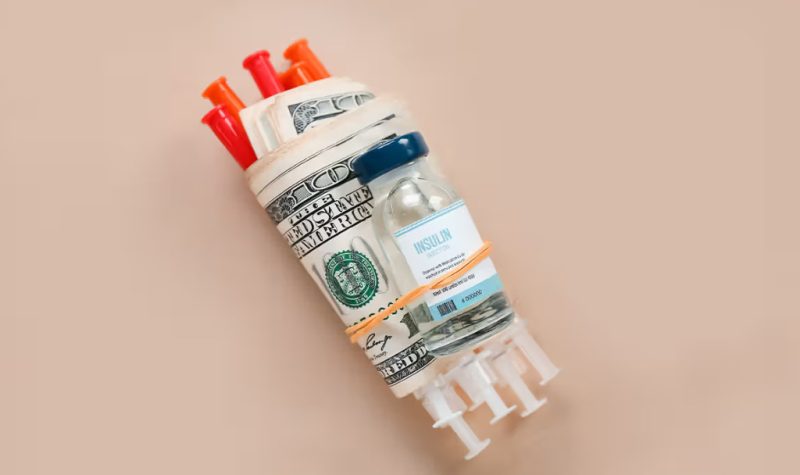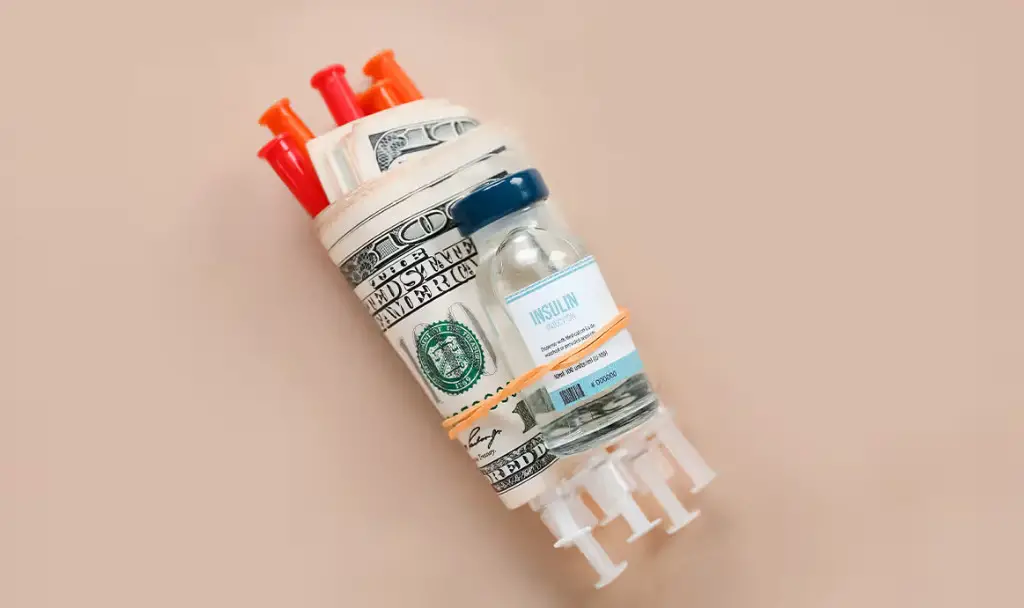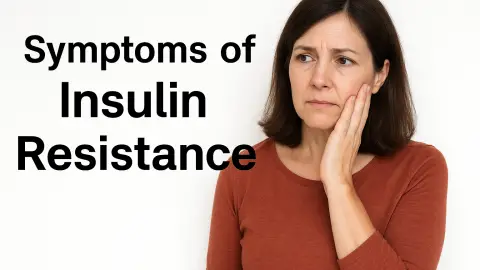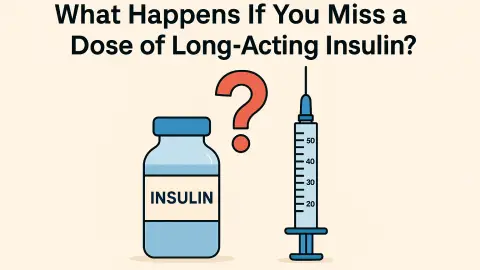Insulin is one of the most essential medications in modern medicine, sustaining millions of people living with diabetes. For patients who depend on it daily, insulin is not optional. It is a biologic drug that keeps blood glucose stable, prevents life-threatening complications, and ensures survival. Yet, despite being discovered more than a century ago, its cost remains astonishingly high in certain countries, especially in the United States.
Over the past two decades, insulin prices have risen far faster than inflation, household income growth, or even the cost of other commonly used medications. This increase has forced many patients to ration doses, switch to less effective formulations, or delay care — all of which significantly increase health risks. Understanding why insulin remains so costly is more than a financial question; it is a matter of public health.
The insulin market is uniquely complex, controlled by a small group of pharmaceutical manufacturers and shaped by layers of pricing negotiations, patents, and distribution intermediaries. These factors create a system where the list price of insulin often has little relationship to its actual manufacturing cost. This article explores the real reasons behind the high price of insulin and examines how the system evolved to become this expensive.
The Structure of the Insulin Market

The Dominance of Three Major Manufacturers
The global insulin market is heavily concentrated, with only three pharmaceutical companies producing the majority of supply. This level of consolidation allows these corporations to exercise significant influence over pricing strategies, product availability, and research directions. Although competition would theoretically reduce prices, the reality is that these manufacturers operate in a space where competition is limited, controlled, and highly regulated.
Historically, each company has developed its own proprietary insulin formulations and delivery systems. This limits direct substitution or generic competition. The technical nature of biologic drugs also makes manufacturing more complex than traditional pharmaceuticals. As a result, even when other companies want to enter the market, the barriers to entry are so high that most cannot compete effectively.
This concentration of power allows manufacturers to raise prices without facing strong market pressure. Even when new biosimilar products appear, they often struggle to gain traction due to physician preferences, insurance formulary structures, and patient familiarity with established brands. Over time, this creates a feedback loop that further reinforces the pricing power of the existing manufacturers.
Limited Competition in a Highly Regulated Market
Insulin is classified as a biologic rather than a chemical drug, meaning it is produced using live cells and complex engineering processes. Unlike traditional pharmaceuticals, biologics cannot be replicated perfectly, making generic versions (called biosimilars) less straightforward to approve. Regulatory standards require extensive testing and verification, adding high development costs and long timelines for any company interested in entering the market.
Because of these challenges, the introduction of biosimilar insulin has been slow. Even when they do reach the market, they rarely undercut brand-name products significantly. Manufacturers often employ marketing strategies, patent protections, and contractual arrangements with pharmacy benefit managers (PBMs) to shield their products from real competition.
The result is a market where newer products are introduced not to lower prices, but to replace older versions and maintain patent protection. This practice, known as “product evergreening,” keeps competitors from producing cheaper alternatives. In such an environment, prices naturally continue to rise because the market lacks mechanisms that would otherwise control them.
The Role of Patents and Evergreening
How Patents Keep Prices High
Insulin patents were initially designed to protect innovation and ensure that companies could recoup development costs. However, the structure of modern insulin patents has evolved dramatically. Companies now file multiple overlapping patents for delivery methods, minor formula adjustments, or manufacturing improvements, effectively extending exclusivity for decades.
This patent layering does not require the creation of an entirely new drug. Instead, small but strategically timed modifications allow manufacturers to maintain control of the market. Because these patents are staggered, they create legal barriers that block competitors from developing alternative products, even when the core insulin molecule is no longer patent-protected.
As a result, the practical lifespan of insulin patents far exceeds what most patients or advocates would consider reasonable. In many cases, the cumulative effect of these overlapping protections delays the introduction of affordable biosimilar options by 10–20 years beyond the expiration of the original patent. This is one of the foundational reasons insulin remains expensive.
Evergreening Practices and Market Replacement
Evergreening is a strategic practice in which pharmaceutical companies release slightly revised versions of an existing insulin product just before key patents expire. These revisions may include changes to pen injectors, stabilizing ingredients, or dosage formats. While these updates may offer some user-friendly improvements, they often do little to change the underlying therapeutic effect.
When physicians shift prescribing habits toward these “new” versions, older versions lose market share. As a result, generic or biosimilar manufacturers targeting older products face limited demand even before they finish development. This discourages investment in competition and reinforces the dominance of the existing brands.
Evergreening also shapes insurance formulary choices. Pharmacy benefit managers frequently negotiate rebates with manufacturers for newer products rather than older ones, incentivizing insurers to prioritize the updated versions. This keeps the cycle of high prices intact and further distances patients from more affordable alternatives.
The Influence of Pharmacy Benefit Managers (PBMs)
Why PBMs Shape Insulin Prices
Pharmacy benefit managers act as intermediaries between manufacturers, health insurers, and pharmacies. Although they do not produce or prescribe medication, they have enormous influence over which drugs appear on insurance formularies. This influence stems from their ability to negotiate rebates — financial incentives paid by manufacturers in exchange for favorable placement.
These rebates are often undisclosed, contributing to a lack of transparency in the pricing system. PBMs profit when list prices are high because their earnings are typically calculated as a percentage of these prices. This creates a misalignment of incentives: PBMs benefit from higher prices, while patients suffer from increased financial burden.
As PBMs continue to grow in size and influence, their negotiating power intensifies. Manufacturers may raise list prices in order to offer larger rebates, a practice sometimes called “rebate inflation.” While insurance companies receive part of these rebates, patients with high deductibles or uninsured individuals continue to pay based on the inflated list price, not the negotiated discount.
How Formularies Limit Patient Choice
Insurance formularies determine which insulin types are covered and how much patients pay out of pocket. PBMs play a central role in shaping these formularies. When a manufacturer offers a substantial rebate, PBMs are more likely to give that brand or formulation preferred placement. This can lead to situations where patients are forced to switch to a different insulin product purely for cost or coverage reasons, even if their previous treatment worked well.
These formulary decisions make it difficult for biosimilar manufacturers to compete. Even if a biosimilar is cheaper, it may not be placed on the formulary unless it offers rebates competitive with brand-name products. Because biosimilar companies typically have lower profit margins, they cannot match the rebate strategies of established manufacturers, which restricts their market access.
This formulary-driven environment reduces the impact of market competition and reinforces the dominance of high-priced brand-name products. Patients are left with fewer low-cost options and often bear financial responsibility that does not reflect the true cost of producing insulin.
The Gap Between Production Cost and List Price
Why Manufacturing Cost Is Not the Problem
One of the most surprising realities is that insulin is relatively inexpensive to produce. Estimates suggest that a vial of human insulin can be manufactured for just a few dollars, while analog insulin may cost slightly more due to additional refinement steps. Despite these low production costs, list prices can reach hundreds of dollars per vial.
The discrepancy arises because the list price reflects the broader economics of the pharmaceutical market rather than manufacturing expenses. Companies argue that list prices support research, innovation, distribution, and safety monitoring. While these factors do contribute to overall cost, they do not justify the dramatic gap between production price and consumer cost.
This large difference raises ethical questions about pricing strategies, especially for a medication that patients need daily. The disconnect between manufacturing cost and retail price is a key driver of public frustration and political scrutiny around insulin affordability.
How Pricing Layers Increase the Final Cost
The final price a patient pays for insulin is influenced by multiple layers of the healthcare system. Manufacturers set list prices. PBMs negotiate rebates. Insurers determine coverage tiers. Pharmacies apply dispensing fees. Each layer adds complexity and cost, making it difficult to trace how much each party contributes to the final price.
This multi-layer structure also reduces transparency. Patients often cannot see how prices are set or why they vary so widely. A patient in one state may pay twice as much as someone in another state for the same product due to differences in insurance contracts and PBM agreements.
The cumulative effect of these pricing layers is a system where patients pay far more than what seems reasonable. Even when reforms attempt to target one part of the system, other parts may shift to maintain existing revenue structures.
Government Policies and Regulatory Barriers
Why U.S. Policy Reinforces High Prices
Unlike many countries, the United States does not negotiate insulin prices at a national level. Instead, prices are set through market dynamics involving private insurers, PBMs, and pharmaceutical companies. This fragmented system limits the government’s ability to control prices or ensure affordability.
Medicare, one of the largest public insurers, historically was prohibited from negotiating drug prices directly with manufacturers. Although recent reforms have targeted this limitation, the impact on insulin prices is still evolving. Private insurers vary widely in their coverage policies, creating additional unpredictability for patients.
The absence of centralized price regulation allows manufacturers to set initial list prices at high levels. Without strong downward pressure from government negotiation, the market maintains elevated prices even as patient advocacy groups push for reform.
Barriers to Importation and Price Competition
Many countries sell insulin at a fraction of U.S. prices due to government negotiation and price caps. However, U.S. regulations severely restrict the importation of cheaper insulin from international markets. Although some states have explored cross-border purchasing programs, federal regulations continue to limit widespread adoption.
Importation policies were designed to protect drug safety, but they also prevent Americans from accessing affordable insulin available just miles across the Canadian border. This restriction further isolates the U.S. from global price competition and reinforces the high domestic cost of insulin.
Regulatory complexities surrounding biosimilar approval also slow down competition. While reforms have streamlined some approval pathways, many companies still face years of testing and documentation before their products can enter the market. These hurdles prolong the period during which brand-name manufacturers can control prices with minimal competition.
How High Insulin Prices Affect Patients
The Hidden Health Risks of Rationing
When insulin becomes unaffordable, many patients resort to rationing, skipping doses, or stretching vials far beyond recommended guidelines. Rationing places individuals at extreme risk for diabetic ketoacidosis, long-term organ damage, and sudden medical emergencies. Hospitals frequently report severe complications linked directly to under-dosing due to financial constraints.
The emotional toll of rationing is equally significant. Patients experience anxiety, fear, and guilt when they cannot obtain the insulin they need. This creates a cycle in which financial stress impacts physical health, and physical health further intensifies emotional distress.
Long-term, the costs of rationing extend far beyond the price of insulin. Emergency room visits, hospitalizations, and treatment for complications can cost tens of thousands of dollars — far more than the price of proper medication adherence. Thus, high insulin prices ultimately increase overall healthcare expenditure.
Economic Burden on Families
The cost of insulin creates substantial financial strain, especially for families with multiple diabetic members or individuals without comprehensive insurance coverage. Even with insurance, deductibles and co-pays often result in significant out-of-pocket expenses at the start of each year.
Families may be forced to make trade-offs between medical care and essential expenses such as housing, food, or education. This creates long-term economic instability and widens health disparities across communities. Low-income individuals suffer disproportionately because they lack access to flexible financial resources or alternative healthcare options.
These economic pressures can lead to employment challenges, as individuals seek jobs solely for insurance coverage or avoid changing jobs due to fear of losing medication benefits. The system creates barriers that restrict social mobility and overall well-being.
Potential Solutions and Future Directions
Reforms Targeting Pricing Transparency
Increasing transparency across the insulin supply chain is one of the most frequently recommended reforms. Greater openness in rebate negotiations, pricing structures, and formulary decisions could reduce opportunities for price inflation. Transparency also helps policymakers identify areas where regulation could produce meaningful change.
Manufacturers, PBMs, and insurers often resist transparency efforts, arguing that pricing information is proprietary. However, public pressure continues to grow as patients and advocacy groups demand accountability. Some states have passed transparency laws requiring manufacturers to report price increases, but their impact is still limited.
Transparency alone cannot solve the problem, but it provides a foundation for larger structural reforms. When pricing information is accessible and clear, the public can better understand where changes are needed.
Expanding Access to Biosimilars and Lower-Cost Alternatives
Encouraging biosimilar competition remains one of the most promising strategies for lowering insulin prices. Biosimilars offer clinically equivalent treatment at potentially much lower cost, but they require regulatory, financial, and market support to succeed.
Reforms that streamline regulatory approval could accelerate the introduction of biosimilars. Insurance policies that incentivize biosimilar adoption would also help normalize their use and reduce dependence on high-priced brand-name products. Additionally, efforts to prevent patent manipulation and limit evergreening would open opportunities for more meaningful competition.
If biosimilars become widely accepted, they could reshape the insulin market in ways that benefit both patients and the healthcare system at large.
FAQs About Why Insulin Is So Expensive
Why has insulin become more expensive over the years?
Insulin prices have increased due to complex interactions between manufacturers, PBMs, patent protections, and insurance formularies. Each part of the system contributes to rising costs by rewarding high list prices and limiting competition.
Is insulin expensive to produce?
No. Insulin production costs are relatively low. The high price patients pay is primarily due to market dynamics, rebates, and regulatory barriers rather than the cost of manufacturing the drug itself.
Who benefits from high insulin prices?
Manufacturers, PBMs, and sometimes insurers benefit from the rebate system tied to high list prices. Patients, especially those with high deductibles, shoulder the financial burden.
Can biosimilar insulin reduce costs?
Yes, biosimilars have the potential to lower prices substantially. However, they face barriers such as limited formulary placement, patent restrictions, and slow regulatory approval processes.
Why is insulin cheaper in other countries?
Countries with centralized healthcare systems negotiate insulin prices directly with manufacturers, limiting markups and preventing dramatic price increases. The U.S. lacks similar price controls.
Are there efforts to cap insulin prices in the U.S.?
Several states and federal initiatives have introduced price caps for certain insurance plans, but these caps do not apply uniformly and often exclude uninsured individuals.
Can patients legally import cheaper insulin from abroad?
Importation is heavily restricted under U.S. law, though small-scale personal importation has been tolerated in certain cases. Large-scale importation remains prohibited.
Will insulin prices go down in the future?
Prices may decrease if biosimilar adoption increases, patent reforms advance, or government negotiation expands. However, systemic change is required for significant long-term impact.
Conclusion
The question “Why is insulin so expensive?” reveals a complex network of economic, regulatory, and structural forces that extend far beyond manufacturing cost. High prices result from a system shaped by patents, intermediary incentives, and market consolidation. For millions of patients, the financial burden of insulin is more than a challenge — it is a threat to health and stability. Meaningful change will require coordinated action from policymakers, healthcare organizations, and the pharmaceutical industry to ensure that this life-saving medication becomes accessible and affordable for everyone who depends on it.
Disclaimer: This article is for educational and informational purposes only. It is not medical, financial, or legal advice. Always consult qualified professionals before making decisions related to your health or treatment.



